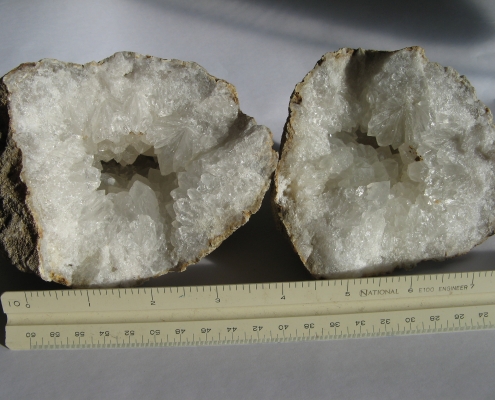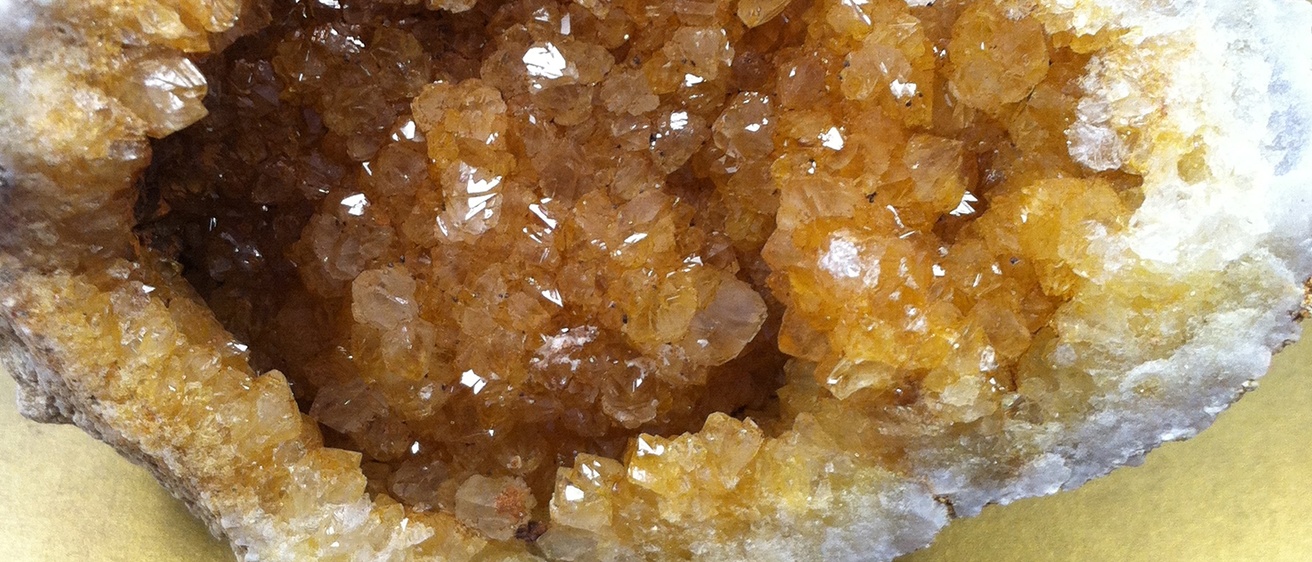
Iowa geodes have long been objects of curiosity and admiration. Their sparkling interiors contain some of the most beautiful crystals to be found anywhere in the Midwest.
One of Iowa‘s most productive and famous geode collecting regions can be found within a 35-mile radius of Keokuk, Iowa. Rock collectors commonly refer to geodes from this region as “Keokuk geodes.” In keeping with the world-renowned status of the Iowa geodes, the Iowa General Assembly declared it the official State Rock in 1967.
Most Iowa geodes are roughly spherical, often lumpy or cauliflower-like on the exterior, with diameters typically ranging from about two to six inches. However, specimens measuring up to 30 inches are known. The most prized geodes have hollow interiors, although many geodes are solid objects in which crystal growth has filled most or all of the interior volume.
Geodes from the Keokuk area contain a variety of minerals, but quartz is dominant in most. Calcite is also a common and attractive mineral in many geodes, which occurs in a variety of crystal habits and colors. An additional 17 minerals have been identified in Keokuk geodes.

Iowa’s renowned Keokuk geodes can be found in specific stream drainages and excavations in parts of southeastern Iowa (especially in Lee, Henry, and Van Buren counties), including the area near Geode State Park. Most geodes are derived from strata of the lower Warsaw Formation, a widespread rock unit of Mississippian age. Fresh geodes can be dug out of exposures of the lower Warsaw Formation, where they are concentrated in certain layers. Where water and streamflow have eroded these strata, concentrations of geodes may accumulate in stream channels.
Collecting geodes can be both fun and educational. Once you’ve located exposures of lower Warsaw strata or a geode-bearing stream course, all that’s required is a little patience and a good bricklayer’s or rock hammer. A sharp blow with a hammer is usually sufficient to crack open individual geodes, exposing their crystalline interiors to daylight for the first time.
Remember that most geode-collecting localities are on private land, and permission must be secured before entering or removing rocks. Geode collecting is not permitted in state parks.
Reference: Iowa Geology No 12, 1987, pages 8–9.
The Keokuk Area Convention & Tourism Bureau website includes a list of potential locations and property owners who may allow collecting geodes on their land.
